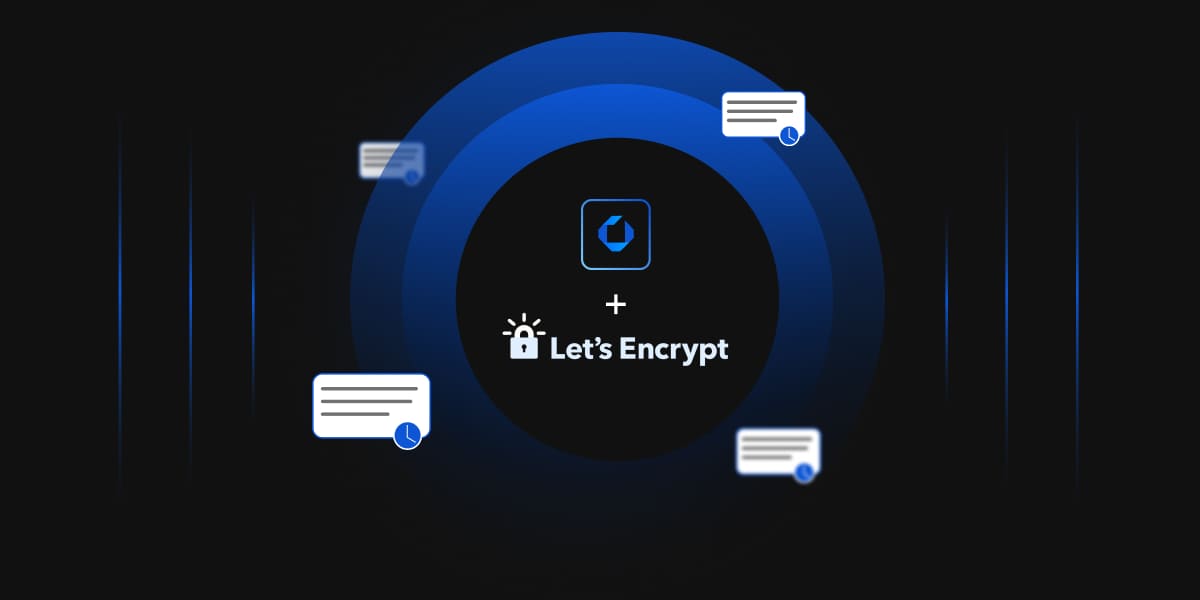Secure internet connections are facilitated by TLS/SSL certificates that guarantee web communication confidentiality and integrity. Nevertheless, these certificates come with some complexities and risks, including expiry, key compromise, misconfiguration, and even human error. By automating the Certificate Lifecycle Management (CLM) process, businesses can eliminate TLS/SSL certificate risks, which are of paramount importance in internet security.
In June 2020, NIST Special Publication 1800-16 (SP 1800-16), “Securing Web Transactions: TLS Server Certificate Management,” was published for the purpose of emphasizing how important the automation of CLM is to reduce risks associated with TLS. This publication provides comprehensive guidance on managing TLS server certificates effectively for web transaction security.
Google’s proposed short-span validity limit of 90 days for newly issued TLS certificates may increase workloads on IT and security teams, particularly organizations with many certificates. Better certificate management strategies and automated tools will have to be adopted.
TLS/SSL Certificate Risks
TLS/SSL certificates are crucial for securing data transmitted over networks. However, there are several risks associated with TLS/SSL certificates that organizations need to be aware of:
-
Risks of Expiration and Renewal
If a TLS/SSL certificate expires and is not renewed in time, the secure connection will be lost, resulting in users receiving security warnings or being unable to access the site. Moreover, there could be errors in configuration, or network or problems with the CA involved that may make systems relying on automated renewal processes fail.
-
Compromising Private Keys
If an attacker steals the private key associated with a TLS/SSL certificate, then he can impersonate the authentic server and decrypt communications as well as attempt man-in-the-middle (MITM) attacks. Key compromise may be the result of poor security practices like insufficient encryption or improper storage of private keys, which aggravates the risk of unauthorized access and data breaches.
-
Issuance of fraudulent Certificates
A Certificate Authority (CA) might issue certificates to unauthorized individuals because of a flawed validation process or due to its evil intentions. Such certificates can then be exploited by phishers or used in man-in-the-middle (MITM) attacks.
-
Failures of Revocation
In case a certificate is compromised, it must be revoked promptly. However, web browsers may sometimes fail to perform revocation checks, especially when the CRL (Certificate Revocation List) or OCSP (Online Certificate Status Protocol) servers are unreachable. Delays in the revocation process can cause a compromised certificate to continue being active, hence extending the period of vulnerability.
-
Weak Algorithms
The use of obsolete cryptographic algorithms like SHA-1 compromises TLS/SSL certificates’ security since attackers could take advantage of flaws present in these algorithms to forge certificates. Likewise, short key lengths such as 1024-bit RSA are easily subjected to brute-force attacks; hence, modern standards recommend at least 2048-bit RSA keys or their equivalents.
-
Configuration Issues
Incorrect chain configuration for a certificate could lead to browsers not trusting it, as they cannot verify it back up to its root trust. Furthermore, serving mixed content (both HTTP and HTTPS) can undermine the security guarantees provided by TLS/SSL certificates.
-
Human Error
Mistakes made by humans while configuring TLS/SSL settings may result from poor cipher suites or faulty installations of certificates. Furthermore, the inability to observe the state and healthiness of certificates can lead to unnoticed expired or compromised certificates.
-
Economic and Legal Risks
A violated TLS/SSL certificate could cause data breaches, leading to financial losses, legal liabilities, and loss of prestige. Also, non-compliance with regulatory requirements such as GDPR and HIPAA through failing to handle and secure the certificates may result in penalties and fines.
How Can CLM Automation Help Minimize These Risks?
-
Preventing Certificate Expiration
To ensure that certificates do not expire, automated systems can renew them well before their expiration dates. This will prevent disruptions in services and security warnings. In addition, automation tools can generate reminders and notifications about the impending expiry of a certificate to facilitate proactive management.
-
Certificate Renewal Failure Reduction
CLM Automation minimizes human error risks related to renewal, whereby correctly configured renewed certificates are maintained uniformly across all systems via automated renewal processes. Also, redundancy as well as failovers may be included within automated systems to cope with such challenges as network downtime or unavailability of CAs, which promote seamless renewal.
Such mixtures of uniform setup, together with an ability to handle failures, make a good mechanism for ensuring reliable and secure TLS/SSL Certificate Management.
-
Improving Key Security
Through automation, keys can be securely generated, stored, and rotated, thus minimizing exposure from manual handling aspects which could compromise key integrity. In order for private keys to be accessed or modified only by authorized parties, audit logs should be kept, and strict access controls should be put into place in automated systems. This results in better private key security overall.
-
Revocation Facilitation
Automated systems can help in quickly revoking compromised certificates and deploy replacements, thus reducing the time available to attackers. Moreover, automation can ensure that revocation status checking of certificates by systems is done regularly.
-
Enhancing Compliance Reporting
Automated certificate management tools may keep full logs of all certification-related matters for compliance reporting and forensic analysis purposes. Automation also makes sure that organizational practices on cryptographic standards and the duration of certificate validity are observed in order to meet the requirements of external regulations. This enables organizations to adhere to regulatory standards while avoiding fines.
-
Improving Key Lengths and Algorithm Updates
Whenever a cryptographic algorithm becomes outdated, automatic systems can be used to change it to another stronger one, such that all certificates would be updated without human intervention. Similarly, automated processes can also make sure that every certificate meets the current standard for key length in order to minimize the chances of brute-force attacks.
-
Cutting Down on Human Error
The likelihood of human errors in key generation, certificate installation, and configuration is reduced by removing manual handling of certificates through automation.
Best Practices for Automating TLS/SSL Certificates
Maintaining a safe and dependable online environment requires that TLS/SSL certificate management be automated. To automate TLS/SSL certificates, some best practices are outlined below:
-
Centralized Management
The centralized certificate management platform or service should be used to ensure automation of certificate issuance, renewal, and revocation across all systems and environments. This will ensure uniformity in the process and minimize the chances of wrong configurations.
-
Automated Renewal
Establish automated processes that renew certificates long before they expire. Verify that job schedules for renewals are well-performed to protect against service disruption caused by expired certificates.
-
Monitoring and Alerts
Monitoring systems must track certificate expiry dates, configuration changes, as well as potential security threats. In order to deal with problems like expired certificates or failed renewals, construct notifications as well as alerts.
-
Integration with Infrastructure
Integrate existing infrastructure and deployment pipelines with certificate automation. This includes integrating with configuration management tools such as container orchestration platforms, continuous integration/continuous deployment (CI/CD) pipelines, etc.
-
Policy Enforcement
Use automation to ensure that organizational policies and security standards are complied with. Create rules and regulations for granting certificates, managing keys, and choosing algorithms used in cryptography. These should be implemented consistently by the automation tools.
-
Access Control
Impose access controls through role-based permissions on management systems of certificates and critical cryptographic materials. Ensure that only authorized people can request, issue, or change a certificate.
-
Secure Key Management
Implement automatic key management practices that create, store, and securely rotate cryptographic keys. Hardware Security Modules(HSMs) or key provisioning services guarantee the protection of private keys from unauthorized access.
-
Compliance Reporting
Use automation to generate compliance reports that include certificate usage, expiry dates, and conformity to security policies. This makes it easier to comply with reporting requirements and auditors’ work.
Conclusion
There is so much at stake when it comes to TLS/SSL certificates; therefore, automation of CLM is very important. Organizations will achieve this if they can automate processes, thus ensuring timely renewals, minimizing human error risk, improving private key security, and enabling quick revocations. Compliance with regulatory standards can also be maintained.
Reliable, consistent configuration, redundancy, and failover mechanisms in automation tools ensure good certificate handling without any difficulties. In addition, the industry has begun shifting towards shorter periods of validity for certificates – for example, Google has proposed a 90-day limit – making it necessary that robust automated strategies are put in place to handle the increasing renewal frequency. With automated systems, however, these renewals can be efficiently conducted so as to avoid any disruptions of services.
By following best practices in automating TLS/SSL certificates, organizations create a resilient and secure TLS/SSL certificate management system. Such actions not only guarantee web transaction security but also ensure adherence to statutory requirements while mitigating against possible financial or reputational risks that may result from non-compliant operations.
How can Encryption Consulting help?
Encryption Consulting’s CertSecure Manager provides a robust and comprehensive solution for managing TLS/SSL certificates. Automating key aspects of the certificate lifecycle, such as renewal, configuration, revocation, and compliance, CertSecure Manager safeguards against risks related to TLS/SSL certificates. It boosts safety, trims down administrative workload, and ensures organizations comply with regulatory norms. It is a necessary tool for firms interested in adequately protecting their web communications.




